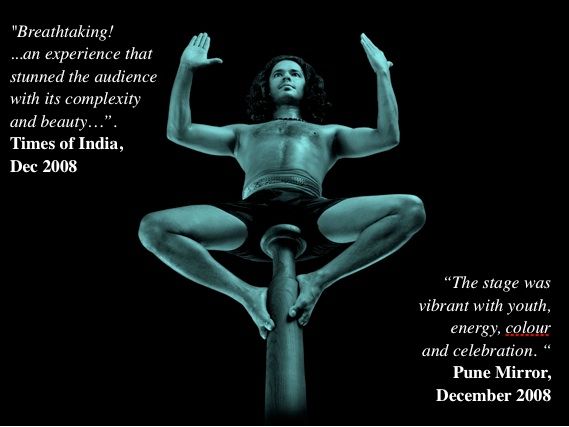environment Politics: assholes corporate irresponsibility denialists idiots Republican obstructionism
by Warren
leave a comment
Meta
SiteMeter
Brighter Planet
Year 4, Month 5, Day 31: A Miasmatic Cloud Of Purple Stink
The San Diego Union-Times notes that their city’s residents are looking around them, and not liking what they see:
More than four out of five San Diegans are concerned about climate change, according to a newly released poll commissioned by a coalition of local universities and policy groups.
The telephone survey of 1,211 residents found that 84 percent of respondents believe climate change is happening, but that more than half think it’s not caused by human activities. About 72 percent believe climate change will affect them personally, while 58 percent believe their actions can make a difference in curtailing its effects.
Climate Education Partners, which commissioned the polling, includes the University of San Diego, California State University San Marcos, the Scripps Institution of Oceanography and the San Diego Foundation.
The survey of randomly selected residents cut across ethnic, economic and political lines, with 30 percent of participants answering in Spanish, said Michel Boudrias, lead scientist for Climate Education Partners and chairman of the University of San Diego’s department of marine science and environmental studies.
The Times-Union has a 125-word limit, most anomalously. May 19:
As atmospheric CO2 creeps ominously past the 400 ppm level, the day-to-day signs of global climate change are everywhere. Droughts, extreme storms, unpredictable temperature swings, longer and more intense fire seasons — name a place on Earth, and there are indicators that catastrophic climate shifts are under way.
With one shameful exception.
In the air-conditioned offices of fossil-fuel CEOs (along with the politicians and media figures they employ), there’s nothing to worry about. Insulated by billions of dollars from the terrifying realities of a climatically transformed planet, these malefactors of great wealth wield grossly disproportionate influence over our national and regional politics — an influence which they are using to block any responsible policy initiatives on climate change and the necessary transformations of our energy economy.
environment Politics: assholes corporate irresponsibility Keystone XL Native Americans tribal societies
by Warren
leave a comment
Meta
SiteMeter
Brighter Planet
Year 4, Month 5, Day 30: ________, And Thanks For The Memories
Heavy times in Rapid City, South Dakota:
Tribal representatives walked out of a meeting today with Department of State officials who came to Rapid City to discuss concerns about the Keystone pipeline project and its potential impact on sites sacred to the tribes, according to a press release from the Indigenous Environmental Network.
The press release went on to say that “tribal, traditional and community members from the Lakota, Ponca, and Pawnee declared the meeting a sham. Oglala Sioux Tribe President Bryan Brewer made a statement dismissing the gathering as a sham because no leadership of the United States was present.”
Instead, the press release said, the “Obama administration sent low level clerks to meet with our tribal and treaty leaders. This disrespect to the provisions of the 1868 Ft. Laramie Treaty between the Lakota, Arapahoe, Cheyenne and the United States, as well as violations to international law and the Declaration on the Rights of Indigenous Peoples, will not be tolerated.”
In the eyes of our corporate overlords, we are all disposable. May 18:
The treatment accorded to Native American tribal leaders in the negotiations over the Keystone XL is essentially identical to that offered American citizens in general. While the tribes are justifiably suspicious, given that the US Government has a long history of making promises it doesn’t keep, we need to understand that another and all-but-unstoppable force involved the ongoing pipeline controversy which has occupied the halls of Congress and the corridors of federal and state governments. The overwhelmingly powerful corporate interests whose profits will increase further with Keystone’s completion are equally ready to promise impossibilities to all American citizens.
They promise the pipeline won’t leak, and if it does leak, they promise to clean it up. They promise that climate change won’t be impacted by extracting and burning the tar sands — and they also promise that climate change won’t damage the pipeline. They promise that the project will bring economic well-being to the US, and end our dependence on foreign oil. Given their dismal track record on all these issues, and the essentially nonexistent penalties for failing to deliver, the fossil fuel industry could promise even more. Approve the pipeline, and everybody gets a pony!
Warren Senders
environment Politics: denialists drought scientific method sustainability Water
by Warren
leave a comment
Meta
SiteMeter
Brighter Planet
Year 4, Month 5, Day 29: Happy Birthday
The Southwest is in for a rough summer. The Albuquerque Journal (NM):
With the preliminary April 1 runoff forecast numbers in hand, this is “the worst year ever” on the Rio Grande, according to Phil King, New Mexico State University professor and the water management adviser to the Elephant Butte Irrigation District. “Ever” in this case translates to a century of water management on the river system through modern New Mexico.
The most likely forecast calls for just 14 percent of the long term average for spring runoff into Elephant Butte Reservoir, according to federal forecasters. That’s not a surprise – King and others were watching the March weather and knew the numbers would be bad. But still… “It hurts to get slugged in the stomach,” King told me this afternoon, “even if you were expecting it.”
EBID will begin releasing what limited water it has to lower Rio Grande farmers beginning in early June, and hope for a big monsoon, King said.
Upstream, farmers in the Middle Rio Grande Conservancy District are seeing water already in their ditches, but it’s not clear how long that will last, according to David Gensler, the agency’s water manager. The District will run out of stored water in upstream dams sometime in late June, according to Gensler, after which farmers will depend on whatever meager supply comes from natural river flow.
“This is going to be one of, if not the worst years in memory,” Gensler said.
Synchronicity, I call it. May 17:
While climatology cannot state definitively that this summer’s projected extreme drought is a direct consequence of climate change, observations and analysis do allow us to understand that the burgeoning greenhouse effect is having an alarming impact. For exmple, atmospheric circulation in the northern hemisphere was distorted for several months following the breakdown of the polar vortex, and extreme high pressure above the Labrador sea pushed the normal storm track south of its usual Atlantic position. All of these changes happening across the globe will hardly leave the Southwest untouched, and in fact it looks like a third straight year of tinderbox conditions lies ahead for New Mexico.
Sure, it might be just a “coincidence” that climatologists have predicted just the sort of harsher droughts and extreme weather that are now making headlines. But if so, it’s a coincidence that’s happening all over the world, with steadily increasing frequency and intensity.
Warren Senders
environment Politics: assholes coal corporate irresponsibility fossil fuels heroes
by Warren
leave a comment
Meta
SiteMeter
Brighter Planet
Year 4, Month 5, Day 28: The Madness Of King George
Well-done, indeed. The Boston Globe:
SOMERSET — Activists in a lobster boat flying an American flag blocked the delivery of 40,000 tons of central Appalachian coal to Brayton Point Power Station Wednesday, bobbing for hours in the path of a freighter nearly 690 feet long.
“The climate crisis is real, and it’s staring us in the face, and we’re not doing anything,” said Marla Marcum, the on-land spokeswoman for the activists, who said she was there to bail them out of jail if the need arose.
The activists were not arrested, a Coast Guard spokesman said.
The lobster boat Henry David T. looked almost quaint, and certainly out of place, against the backdrop of the hulking power plant.
The freighter it blocked, more than 20 times its size, sat at the end of a long pier; the anchored lobster boat turned slowly in the current.
“I choose to place my body between the exploding mountain tops of Appalachia and the burning fires of our consumption and greed as a witness to the new way of being in the world that we know is possible,” one of the boat’s captains, Jay O’Hara, 31, wrote on the website coalisstupid.org, where activists live-blogged the protest.
O’Hara, of Bourne, and his cocaptain — Ken Ward, 57, of Jamaica Plain — called for Brayton Point to be shut down immediately for the sake of “planetary survival.”
Ward and O’Hara arrived at Brayton Point around 9 a.m. and dropped anchor, activists said; the freighter, the Energy Enterprise, arrived at about 11:15.
Coast Guard Petty Officer Robert Simpson said the two men cooperated with officials, but when the Coast Guard told them to move their boat, they realized that their anchor was stuck.
The Boston Coal Party. Works for me. May 16:
Boston’s role in our country’s creation lends the action of local environmentalists even greater historical resonance.
By blocking the delivery of almost a million pounds of coal to Brayton Point, Jay O’Hara and Ken Ward have struck a blow against a malign force which has co-opted our government for its own interests. Fossil fuel corporations, arguably the most powerful economic actors on the planet, exert incalculable influence on American politics. That they have offices on American soil doesn’t change the fact that they’re essentially colonial powers, enriching themselves on our tax dollars. Instead of funding schools, infrastructure, and a functional public health system, American citizens’ hard-earned money subsidizes oil and coal, pays to clean up spills, leaks, and toxic waste, and funds expensive wars — a textbook example of taxation without representation in the service of an occupying power.
O’Hara and Ward make me proud to be a Bostonian.
Warren Senders
environment India Politics: climate refugees denialists glacial melt irrigation mountains
by Warren
leave a comment
Meta
SiteMeter
Brighter Planet
Year 4, Month 5, Day 27: River Deep, Mountain High
The LA Times, on Mount Everest. So to speak.
A warming climate is melting the glaciers of Mount Everest, shrinking the frozen cloak of Earth’s highest peak by 13% in the last 50 years, researchers have found.
Rocks and natural debris previously covered by snow are appearing now as the snow line has retreated 590 feet, according to Sudeep Thakuri, a University of Milan scientist who led the research.
The pessimistic view of Earth’s tallest peak was presented during a meeting Tuesday of the American Geophysical Union in Cancun, Mexico.
Researchers said they believe the observed changes could be due to human-generated greenhouse gases altering global climate, although their research has not established a firm connection.
The team reconstructed the glacial history of the area using satellite imagery and topographic maps of Everest and the surrounding 713-square-mile Sagarmatha National Park. Their statistical analysis shows that the majority of the glaciers in the national park are retreating at an increasing rate, Thakuri said.
Why? Because it’s not there. May 15:
Once we set aside the iconic importance of a shrinking Mount Everest, the really ominous facts about disappearing ice caps in the Himalayas are the numbers of people whose lives depend on them. Whether it’s for irrigation, hydroelectric generation, or clean drinking water, this steady flow from the world’s tallest mountains is crucial for the existence of almost a seventh of the world’s population. If we subtract that water from the picture, what’s left are hundreds of millions of climate refugees, desperate, landless, hungry, thirsty.
But these people may be more fortunate than many in the developed world who rely on elaborate infrastructure for their food and water. Why? Because they can simply look up and see the daily changes on these peaks, they’re not tempted by magical thinking and ideologically-motivated denialism, like those whose air-conditioned lives have allowed them to ignore the climate crisis until it’s already upon them.
Warren Senders
environment India Politics: agriculture corporate irresponsibility sustainability
by Warren
leave a comment
Meta
SiteMeter
Brighter Planet
Year 4, Month 5, Day 26: Directly From My Heart To You
India West talks about the economic implications of climate change:
Sustainable development that mitigates the impact of climate change for India’s poor can only be achieved by the devolution of the Indian government, stated prominent social activist Sunita Narain at a March 27 lecture at Arizona State University.
“Getting the model of development right so that everyone has access to health care, water and energy supplies is only achievable when the government is de-centralized,” Narain told India-West in an interview after the lecture, which was organized by ASU’s Global Institute of Sustainability.The director general of the New Delhi-based Centre for Science and Environment, Narain has received numerous accolades for her work, including the Padma Shri – India’s highest honor – in 2005. In 2007, Narain was named by Time magazine as one of India’s 15 most influential people. Foreign Policy magazine has thrice named Narain one of the world’s best intellectuals.
“Climate change is already hurting the world’s most poor and vulnerable,” stated Narain, explaining that rainwater – a major resource for India’s largely agrarian population – has been inconsistent, with more rainfall, but for a fewer number of days.
“Farmers are very desperate today. This is their livelihood; it is the only thing they know. And we can send them to cities to get jobs, but the urban sector doesn’t have the ability to absorb all those people,” stated Narain.
A smallpox-infested atmospheric blanket offered to the world’s poor. May 14:
As rising levels of carbon dioxide push the greenhouse effect into overdrive, agriculture all over the world is going to be affected; harvests will shrink, crops will come under attack from invasive parasites and diseases, and inevitably subsistence farmers and small landholders in the world’s poorest countries are going to suffer. In comparison to rich and developed countries, Bangladesh’s carbon footprint is statistically insignificant, yet its citizens are facing imminent displacement from their lands, lives and hopes due to rising sea levels — and this is just one example of a worldwide phenomenon. The cruel irony of global warming is that while the greenhouse emissions triggering planetary warming are produced by the richest and most privileged among us, those who are already economically and politically disenfranchised will reap the whirlwind.
History notes many cases of intentional genocide in the service of colonialism and economic expansion. Climate change’s impact on the world’s poorest people wasn’t planned, but that’s no consolation. It falls to the developed world to act responsibly on the climate crisis, or to shoulder the blame for a catastrophe with both environmental and humanitarian dimensions.
Warren Senders
environment Politics: agriculture forests hubris sustainability timescale
by Warren
leave a comment
Meta
SiteMeter
Brighter Planet
Year 4, Month 5, Day 24: Born A Poor Young Country Boy
Have you hugged a tree today? The Portland Press-Herald:
Unless people dramatically cut the amount of carbon dioxide they’re putting into the air and water through industry, farming, landfills and fossil fuel consumption, Maine’s largest manufacturing industry will be damaged in ways scientists can only begin to predict.
That’s the conclusion reached by experts who are studying how climate change is likely to affect Maine’s more than 18 million acres of forests.
The nation’s most heavily forested state, Maine is likely to be in for a rude awakening in forestry within the next 20 to 100 years, state specialists predict. Which trees will flourish, and where, will change — gradually over time — and imperceptibly at first to most observers.
Which trees might disappear — literally migrating to reach more congenial growing conditions — and what the survivors will need to protect them from an erratic climate and a host of predators are questions researchers are trying to probe, knowing how difficult such projections can be.
But the implications are huge. In Maine, forests translate into a lot of land, money and jobs.
It’s getting harder and harder for denialists to keep it up…not when there’s real money involved. May 12:
Humanity’s success and prosperity would have been unthinkable without the essentially benign climate which made agriculture possible, setting the stage for our civilization to develop into a complex and planet-wide web. We could not have become who we are without closely cooperating with Earth’s natural cycles over countless thousands of years.
No more.
By releasing eons’ worth of fossilized carbon into the atmosphere in a geological instant, humans have traumatized their environment, with planet-wide consequences, from Maine’s endangered forests, drought-withered Midwestern corn fields, or Bangladeshi farmland inundated by rising sea levels.
These impacts are symptoms of our decision to separate ourselves from the tightly woven fabric of Earthly life. Fighting climate change demands not just that we change our energy economy and find ways to sequester atmospheric CO2, but that we build a relationship with the natural world that is once again based on principles of cooperation, not of competition.
Warren Senders
Education environment Politics: history sustainability timescale
by Warren
leave a comment
Meta
SiteMeter
Brighter Planet
Year 4, Month 5, Day 23: There Is A Fountain
The Moose Jaw Times-Herald talks about a visitor to their neighborhood:
“You’re probably sitting here thinking to yourselves, ‘Why us? This is so unfair. This damned thing is going to dominate my life.’ … Get over it.”
That was the tough sentiment veteran freelance journalist and historian Gwynne Dyer brought to dozens of Vanier Collegiate students when he visited the school Thursday to talk about the looming threat of global warming — a topic that he has become familiar with after years of interviews, research, and writing about the topic.
Dyer, who has built an extensive career out of freelancing as a reporter on international affairs and writing about war, geopolitics and climate change over the past several decades, told the story of his investigations into global warming and the measures that governments across the globe are taking to counteract the grim potential outcomes of runaway warming.
“Runaway warming is what will take you right up to five or six degrees higher average global temperature. You hit runaway warming and you lose control when you hit about two degrees higher,” he said. “We know what the planet looked like when it was about six degrees warmer, because there has been times in the past when it was. The last time was about 50 million years ago.”
But, Dyer said, the issue now is one that is man-made, and the result of reintroducing carbon dioxide that has been trapped in the form of fossil fuels into the “closed system” that the Earth has to deal with it, creating a surplus of the greenhouse gas that traps heat.
I won’t call this one of my best, but it’s got a useful point that I’m going to try and develop in other letters. May 10:
The entire span of recorded human history has taken place in a brief interlude of relatively benign planetary climate; in fact, it’s probably accurate to say that the moderate conditions of the past twelve thousand years are what has made human civilization possible, historical records and all. Now, however, the gravest crisis humanity has ever faced is threatening not just our infrastructure and our agriculture, but our entire conception of what it means to be human. The proud history of our species has been painted on the canvas provided by a stable and predictable climate; to unthinkingly tear that canvas asunder with our escalating emissions of greenhouse gases is to replace “history” as we’ve known it with a grim tale of decline: the saddest story ever told.
There is no more time to waste. Only by acting quickly, collectively, and intelligently may we instead make our history one of triumph and humility: the greatest story ever known.
Warren Senders
environment India music: benefit concert
by Warren
2 comments
Meta
SiteMeter
Brighter Planet
Dancing For The Planet

Navarasa Dance Theater
Nani Agbeli & The Agbekor Society
Zoé Dance Company
Friday, June 21 — 7:00 pm — Boston
On Friday, June 21, three dance companies representing diverse movement traditions will join together to draw attention to the global climate crisis. Featured artists are the Zoé Dance Company, the Navarasa Dance Theater, and Nani Agbeli & The Agbekor Society. The music begins at 7:00 pm, at Emmanuel Church, 15 Newbury Street, Boston, MA. Tickets are $20; $15 students/seniors. All proceeds will go to 350ma, the Massachusetts chapter of the environmental organization www.350.org. For information, please call 781-396-0734, visit “Dancing For The Planet” on Facebook, or send us an email.
“Dancing For The Planet” is the seventh concert in the “Playing For The Planet” series, conceived as a way for creative performers to contribute to the urgent struggle against global warming. Because the climate problem recognizes no national boundaries, the artists represent styles from three different parts of the globe. Their choice of beneficiary, 350MA.org, is focused on building global consensus on reduction of atmospheric CO2 levels — action which climatologists agree is necessary to avoid catastrophic outcomes. It’ll be an evening of brilliant dance and movement — for the central cause of our century.
Purchase tickets online from CCNOW:
Regular admission: $20
Student/Senior Admission: $15
Advance Ticket Orders Are Accepted Until 3 pm on June 21. Orders received after Tuesday, June 18 will be held at the door.
About the Artists
=======================================================

Navarasa Dance Theater was founded by renowned dancer/choreographer Dr. Aparna Sindhoor. Inspired by the eclectic performing arts traditions and boldly knitting together dance, singing, martial arts, and original music into seamless theatrical presentations, Navarasa’s multilayered, multilingual productions inspire, engage and entertain audiences around the world.

With original movement vocabulary created by choreographers Sindhoor and Anil Natyaveda along with theatrical narratives designed by S M Raju, Navarasa Dance Theater’s work is simultaneously specific and universal.



Navarasa Dance Theater has performed in North America, Asia and Europe and has been presented at various festivals and venues including the Bates Dance Festival, Lincoln Center (NYC), East West Players, LA and NJPAC, Jacob’s Pillow and Asian American Theater Festival, USA; Teesri Duniya Theater, Canada; Amol Palekhar’s Beyond Words Theatre Festival and Bahuroopi National Theatre Festival, India; and Franco Dragone’s INDIA show in Germany. With performing arts training schools in USA and India, Navarasa’s ongoing teaching programs include the “Dance for Everyone” project that offers scholarships and free dance training for underprivileged children and adults.

======================================================

Founded in 2002, Zoé Dance has presented works by Callie Chapman Korn, Ivan Korn, Emily Beattie and Meghan Ballog. Zoé Dance nurtures the art of dance, dance theatre and performance through accessible performance venues, educates the public and creates social awareness through themes explored in repertory, and has presented its work since 2002 in various venues and performance opportunities around Boston and internationally such as: World Music/CRASH Arts’ “Ten’s the Limit” (2005 and 2007), ArtBeat 2004 and 2009, “Virgin”, produced by the Dance Renewal Project, Harvard Square’s “May Fair” 2004, with the Choreographers Group 2004, Earth Dance’s Outdoor Performance Festival 2003, Corporación Cultural de Las Condes (Santiago, Chile) 2007, Boston Center for the Arts’ Mills Gallery as a featured artist of the Movement at the Mills residency.

Zoe has also presented its work at the Dance Complex, Cambridge Multicultural Arts Center, Tower Auditorium at Massachuestts College of Art, the Boston Common, Union Square Plaza, and Green Street Studios. Zoé Dance was awarded a project grant from the Somerville Arts Council (2010) and was a finalist for the Boston Dance Alliance’s Rehearsal and Retreat Fellowship (2009).

Callie Chapman Korn (artistic director): Callie holds a B.F.A. from the Boston Conservatory. With Zoé, Callie has presented her work in venues such as CrashArts‘ “Ten’s the Limit” at the ICA and Green Street Studios, Corporacion Cultural de Las Condes (Santiago, Chile), multiple self-produced concerts, festivals, part of the Dance Renewal Project’s “Virgin”, Dance Complex’s Shared Choreographers Concert. She currently dances for Prometheus Dance and has worked with artists such as: Nicola Hawkins, Karen Murphy and Emily Beattie. She has collaborated with video artists Greg Shea and Ken Kinna, composer Ivan Korn, and composers/musicians Pancho Molina and Billy Herron. Callie also helped develop the Dance Renewal Project and is currently the Marketing and Design Associate for the Boston Dance Alliance.

======================================================

Known for his energy, athleticism, and precision on stage, the charismatic Nani Kwashi Agbeli is a native of the Ewe from the Volta Region of Ghana, W. Africa. He received his drum and dance training from his father, Godwin K. Agbeli, who was the chairman of the National Folkloric Company at the Arts Council of Ghana. Nani performed with and led the cultural group Sankofa Root II in Ghana where they received many awards.

For nine years, he served as the lead drum and dance instructor at the Dagbe Cultural Center, a school that trains domestic and international students in Ghanaian traditional arts, and is now on the faculty of the Music Department at Tufts University, where he and directs the Kiniwe Ensemble and teaches an integrated curriculum in the traditional singing, drumming and dancing of Ghana.

Nani also teaches Ghanaian dance and drumming at Brandeis University and Mount Holyoke College, along with Berklee College of Music, the Edna Manley School in Jamaica, Bowling Green University, and the University of Virginia, among others. He currently lives in Boston, Massachusetts.

The Agbekor Drum & Dance Society began in 1979 as a project to study and perform repertory from Africa, primarily focusing on two separate repertoires: Ewe and Dagomba. The homeland of the Ewe people is along the Atlantic Coast of western Africa in the nation states of Ghana and Togo. The Dagomba homeland is in savanna grasslands several hundred miles to the north and the lands of their traditional kingdom, Dagbon, are entirely within the current borders of Ghana. In Ewe drumming, each instrument has a specific rhythm that it repeats over and over. Riding on this musical wave, so to speak, the lead drum sends musical signals that cue dancers when to do their different variations. In Dagomba dance-drumming, four different drum parts intertwine their variations. In both Ewe and Dagomba traditions, each item of repertory has its unique purpose, meaning, history, and performance personality.

In their frequent collaborations with Ghanaian master drummers, the Agbekor Society continues to renew its connection with its African sources. The Society has appeared in clubs, concerts, lecture-demonstrations and festivals throughout New England, and in collaborations with jazz and “world music” artists like Natraj, Antigravity and the Jazz Composers Alliance Orchestra.
======================================================
About www.350.org and the number 350:
Co-founded by environmentalist and author Bill McKibben, 350.org is the hub of a worldwide network of over two hundred environmental organizations, all with a common target: persuading the world’s countries to unite in an effort to reduce global levels of atmospheric carbon dioxide to 350 parts per million or less. Climatologist Dr. James Hansen says, “If humanity wishes to preserve a planet similar to that on which civilization developed and to which life on Earth is adapted, paleoclimate evidence and ongoing climate change suggest that CO2 will need to be reduced to at most 350 ppm.” (Dr. Hansen headed the NASA Institute for Space Studies in New York City, and is best known for his testimony on climate change to congressional committees in the 1980s that helped raise broad awareness of the global warming issue.) Activists involved in the 350 movement include Rajendra Pachauri (Chairman, Intergovernmental Panel on Climate Change), Vandana Shiva (world-renowned environmental leader and thinker), Archbishop Desmond Tutu (1984 winner of the Nobel Peace Prize and a global activist on issues pertaining to democracy, freedom and human rights), Van Jones, Bianca Jagger, Dr. James Hansen, Barbara Kingsolver and many more.
======================================================
Warren Senders is the contact person for “Dancing For The Planet.” He is one of thousands of concerned global citizens hoping to trigger positive change through social action and the arts. He can be reached at warvij@verizon.net or by telephone at 781-396-0734.
======================================================
“Dancing For The Planet” will be pleased to supply photographs and promotional materials for each of the artists performing at this event.
